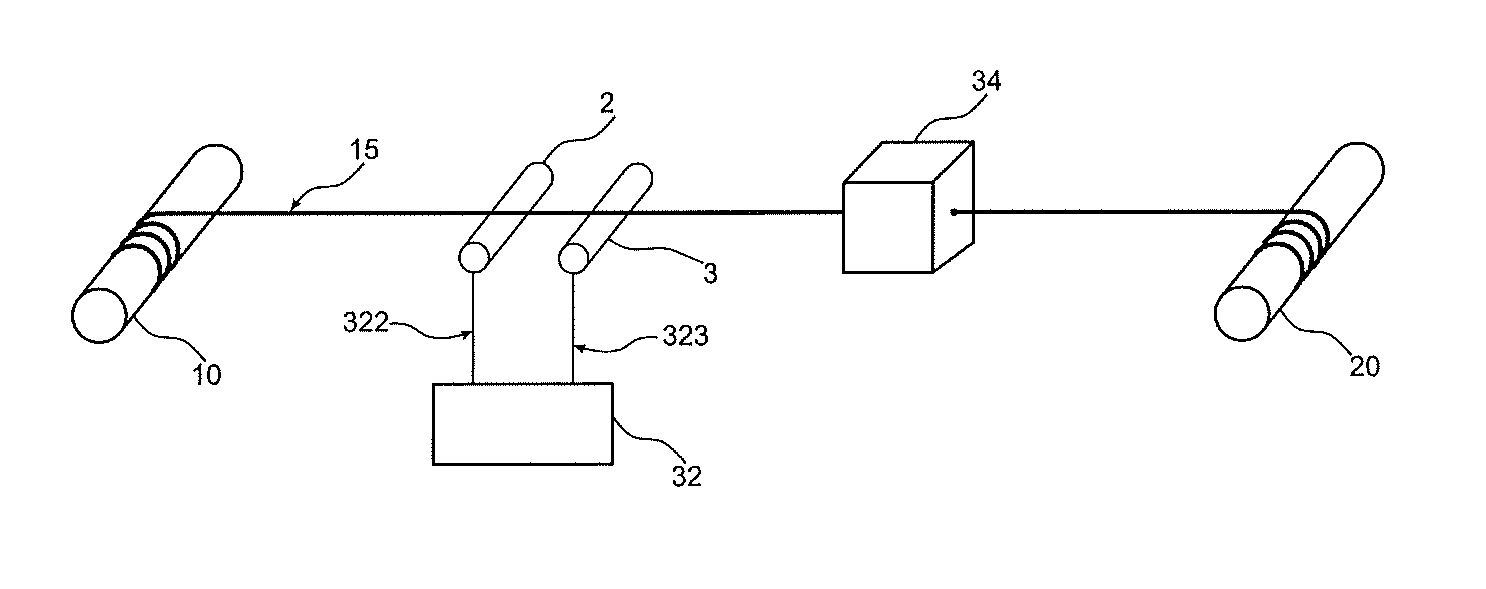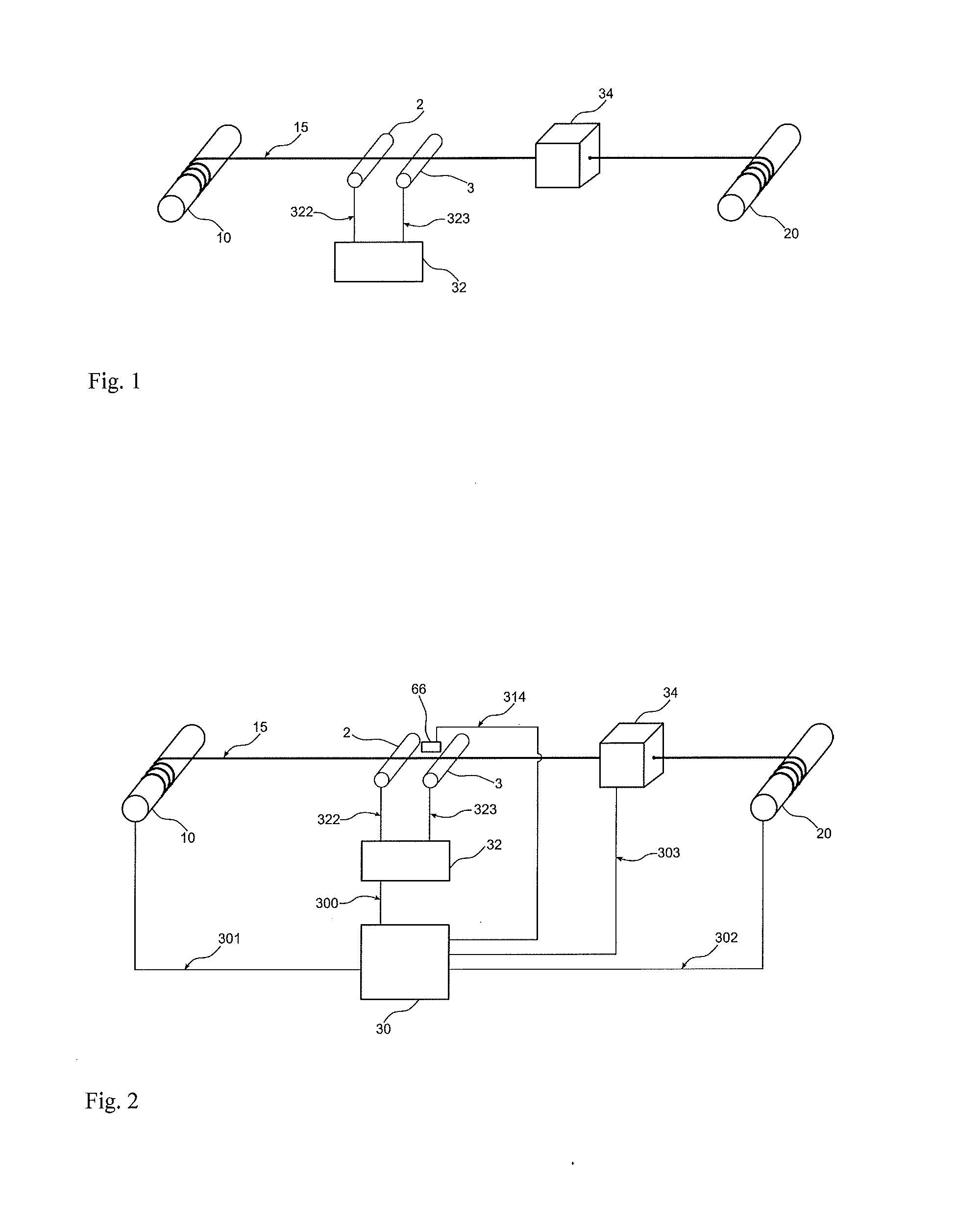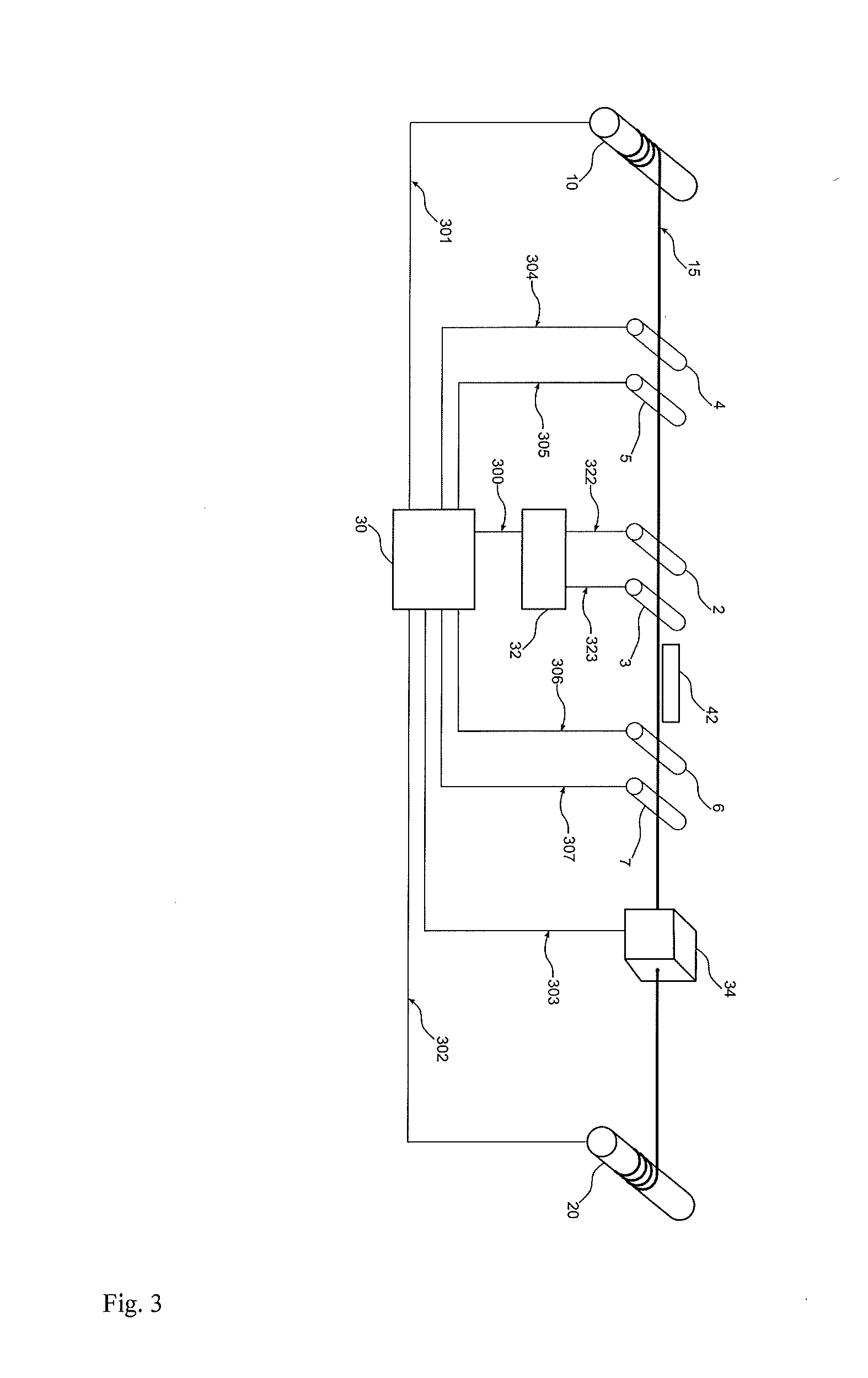Method of heat treatment and/or inspection of functional mechanical properties, particularly transformation strain and/or strength, of shape memory alloy filaments and apparatus for the application of this method
a technology of transformation strain and/or strength, which is applied in the direction of seismology, geological measurement, and solid analysis using sonic/ultrasonic/infrasonic waves. it can solve the problem of inability to achieve extreme precision in the adjustment of the functional mechanical properties of sma filaments, and achieves significant heat transfer from the filament to its environment, small stress hysteresis, and elimination of disadvantages.
- Summary
- Abstract
- Description
- Claims
- Application Information
AI Technical Summary
Benefits of technology
Problems solved by technology
Method used
Image
Examples
example 1
[0075]FIG. 1 shows a schema of the apparatus for the heat treatment of continuous SMA filaments. The filament 15 is respooled from the feeding spool 10 to the taking spool 20. The filament tensile stress control element 34 maintains the desired tensile stress in the filament. The filament is guided first over contact 2 and then 3. Both contacts are connected with the electric current source 32.
[0076]Since the filament 15 is typically very thin (˜0.1 mm) and its exposure to electric current is short (˜0.1 s), the actual filament temperature can not be reliably measured. Therefore, it is calculated using the following equation
t(Tp(t)·C)=P-h·A·(Tp(t)-Text);Tp(0)=Text
[0077]Left side of the equation evaluates the heat accumulated by the filament in a unit time. The right side describes the difference between the heat supplied to the filament through the Joule heating and the heat transfer from the filament to the air environment per unit time. The time ta the filament is exposed to the a...
example 2
[0081]In the previous example 1, we have described the heat treatment of continuous SMA filaments. In this preferred example 2, the heat treatment of short segments of SMA filaments using the apparatus for the heat treatment of discontinuous SMA filaments (FIG. 5) is described. Filament segment is mounted into the grips 84 and 85 which are connected to the electric current source 32. System for control of the tensile stress or tensile strain in the filament 38 connected with one of the grips 84 or 85 allows controlling either tensile strain or tensile stress in the filament in time. The time ta the filament is exposed to the action of the electric current can be selected arbitrarily, however, its value affects the homogeneity of temperature distribution and consequently the homogeneity of microstructure in the treated filament. When longer times ta are selected, there are gradients of temperature from the filament core towards its surface as well as along the length of the filament ...
example 3
[0085]FIG. 3 shows schema of the apparatus for the heat treatment of continuous SMA filaments which uses, additionally to the apparatus presented in preferred example 1, an on line feedback control of the process according to the electric resistance of the treated filament. In this example, the knowledge of the change of the electric resistance of the filament during the heat treatment is actively utilized. FIG. 12 shows 5 experimentally recorded evolutions of the electric resistance during the heat treatment of discontinuous SMA filaments for constant supplied electric power P and various times ta for which the filament is exposed to the action of the electric current: curve 131—ta=1 ms; curve 132—ta=6 ms; curve 133—ta=11 ms; curve 134—ta=16 ms; curve 135—ta=21 ms. FIG. 13 shows corresponding tensile stress-strain curves (10 cycles at room temperature) representing the achieved functional mechanical properties of the treated filament. It is seen from FIG. 12 that the electric resis...
PUM
| Property | Measurement | Unit |
|---|---|---|
| temperature | aaaaa | aaaaa |
| tensile stress | aaaaa | aaaaa |
| time | aaaaa | aaaaa |
Abstract
Description
Claims
Application Information
 Login to View More
Login to View More - R&D
- Intellectual Property
- Life Sciences
- Materials
- Tech Scout
- Unparalleled Data Quality
- Higher Quality Content
- 60% Fewer Hallucinations
Browse by: Latest US Patents, China's latest patents, Technical Efficacy Thesaurus, Application Domain, Technology Topic, Popular Technical Reports.
© 2025 PatSnap. All rights reserved.Legal|Privacy policy|Modern Slavery Act Transparency Statement|Sitemap|About US| Contact US: help@patsnap.com



